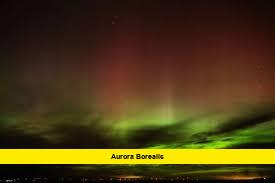The aurora borealis, also known as the northern lights, might light up skies across parts of the U.S. this Monday night. A recent geomagnetic storm has experts buzzing with predictions. According to the latest updates from NOAA’s Space Weather Prediction Center as of October 14, 2024, solar activity could make this natural wonder visible farther south than usual.
Skywatchers in Oregon eagerly await this event. The state’s northern regions, like Portland and Bend, stand a good chance of spotting the lights. Clear weather forecasts add to the excitement. But Oregon isn’t alone. A detailed map from NOAA highlights 15 other states with potential views.
This surge in aurora activity stems from a coronal mass ejection. It hit Earth’s atmosphere over the weekend. Scientists track these solar flares closely. They cause charged particles to collide with gases in our upper atmosphere. That collision creates the dazzling greens, purples, and reds we associate with the aurora borealis.
Experts rate Monday’s geomagnetic storm at a Kp index of 6. That’s strong enough for visibility in mid-latitudes. Normally, you’d need to head to Alaska or Canada for reliable sightings. But this event changes the game. It pushes the auroral oval southward.
The map pinpoints prime viewing spots. In the West, Washington and Idaho join Oregon. Montana and Wyoming offer vast dark skies ideal for observation. Moving east, North Dakota and South Dakota could see faint glows. Minnesota’s Boundary Waters area might provide stunning backdrops.
Further south and east, Wisconsin and Michigan prepare for possible displays. Illinois, Indiana, and Ohio residents should look north after dark. Pennsylvania, New York, and Maine round out the list. These 16 states total give millions a shot at this rare treat.
To make sense of the predictions, here’s a quick breakdown of viewing chances by region:
- Pacific Northwest (Oregon, Washington, Idaho): High probability with clear forecasts; best after 10 p.m. local time.
- Rockies and Plains (Montana, Wyoming, North Dakota, South Dakota): Moderate to high; minimal light pollution in rural areas boosts visibility.
- Midwest (Minnesota, Wisconsin, Michigan, Illinois, Indiana, Ohio): Variable, depending on cloud cover; aim for northern horizons.
- Northeast (Pennsylvania, New York, Maine): Fair chances, especially in higher elevations; watch for urban interference.
Remember, these are estimates. Actual visibility depends on local weather and solar wind strength. Apps like Aurora Forecast or websites from NASA provide real-time alerts. They update every few hours based on satellite data.
Photographers and enthusiasts share tips online. Use a tripod for long exposures. Set your camera to ISO 800 or higher. Avoid city lights to reduce glare. Dress warmly, as nights turn chilly in October.
Social media buzzes with recent sightings. Instagram users posted vibrant photos from last week’s storm. YouTube channels like Space Weather Live offer live streams. Google News aggregates stories from outlets confirming Monday’s potential.
This isn’t the first big event in 2024. May’s solar storm wowed viewers worldwide. October’s activity continues the trend. Solar Cycle 25 peaks, promising more displays ahead.
Safety comes first. If driving to dark spots, plan routes carefully. Check road conditions, especially in mountainous states like Oregon.
Communities organize watch parties. In Portland, local astronomy clubs host events. Similar gatherings pop up in Minneapolis and Buffalo.
The aurora borealis inspires awe. It reminds us of our planet’s connection to the sun. These lights dance across the sky, creating unforgettable memories.
Experts monitor the sun’s behavior closely. If activity ramps up, visibility could extend even further. Stay tuned to NOAA for updates.
For the best experience, find a spot with a clear northern view. Patience pays off—the show might start late.
This event highlights nature’s power. It draws people together under the stars.
Have you spotted the northern lights before? Share your stories in the comments below—we’d love to hear how Monday night unfolds for you.
